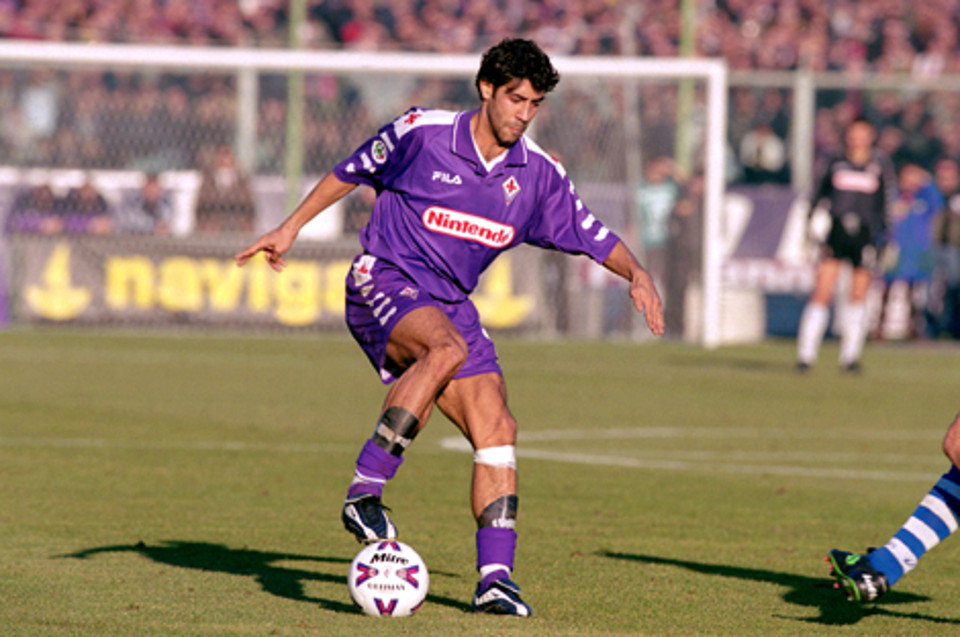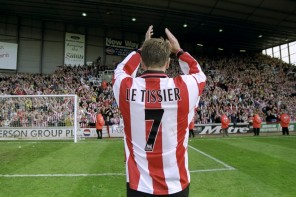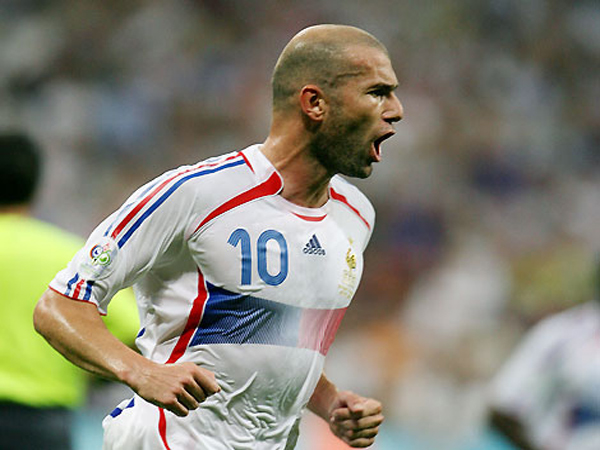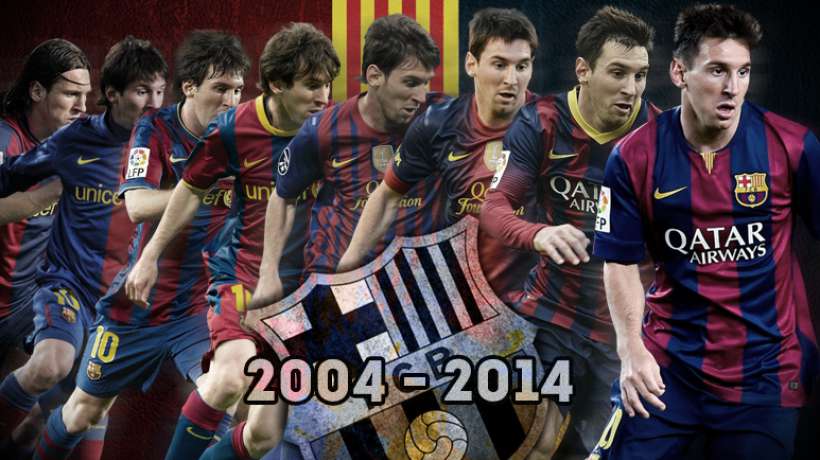The classy Portuguese playmaker adored by all
The number 10 shirt of Benfica and Fiorentina weigh heavy on those gifted enough to be chosen as its inhabitant. It is an indication of just how talented Manuel Rui Costa was then, that he would find both shirts not only a perfect fit, but wear them with such style, grace and an honour now so rarely seen in the superstars of this generation.
For the Portuguese side, where national treasure Eusebio was, and still is, the ultimate legend, the number was his shirt. Poetic then, that it was he who spotted the 5 year olds potential after just 10 minutes of a youth training session, securing his future for Lisbon’s Eagles.
In Florence, city of the Renaissance, legendary long-haired artists in the forms of Antognoni and Baggio had adorned the viola 10 shirt, using the Artemio Franchi pitch as their creative canvas, whilst ensuring the symbolic meaning of the number held true in its purest form.
Breaking through the youth ranks at Benfica, continuing to prove the ultimate endorsement from Eusebio correct, the young playmaker impressed during his tentative senior years. After an impressive season long loan with AD Fafe culminated in Portugal’s youth coach at the time, a certain Carlos Queiroz (of future Manchester United and Real Madrid fame), call him up to the World Youth Cup squad alongside names such as Luis Figo and Joao Pinto, to compete at the FIFA Youth World Championships. It was the team which went on to be christened the ‘Golden Generation*‘.
In a strong tournament which featured many future household names such as Juan Esnaider, Mauricio Pocchettino (the current Southampton manager), Mark Bosnich, Giovane Elber, Andy Cole, Dwight Yorke, Alfonso, and Paolo Montero, it was Portugal who secured victory, with Rui Costa scoring the winning penalty in the final versus Brazil in front of 127,000 delirious home supporters.
Now a hero in his country, the playmaker with the golden touch went on to establish himself in the Benfica first team. His presence was inspiring as the club went on to win two trophies; first the Portuguese Cup in 1993, followed by the league title itself in 1994. It would be Benfica’s last for 11 years.
Just as the good times had arrived, so did the club’s financial difficulties. A bid of €6 million was enough for Fiorentina to capture one of Europe’s brightest prospects as Benfica where forced to sell their prize asset.
Whilst there was evident sadness from the departing player, who vowed to return to his beloved club ‘one day’, he was about to enjoy the best years of his career, forming one of the most deadly attacking partnerships around, which became feared in Italy, and the envy of all Europe’s super clubs.
La Viola already had a truly lethal hitman in the form of Gabriel Batistuta on their books – complete with machine gun celebration. They now had someone to supply him with an endless amount of bullets.
To merely label Rui Costa as the Bat-man’s ‘Robin’ is perhaps a little demeaning to the influence the Portuguese had on the side, however there is no doubting he was Batistuta’s perfect foil. And when both were in tandem, devastation ensued for opposition defences.
At the time Fiorentina had a fairly average squad, but they boasted arguably the best number 9-number 10 combination in the game, and it took just two seasons before the double-act yielded success for the team, winning the Coppa Italia in 1996.
Just three years later the partnership was at its most potent, when this perfect mix of Portuguese panache and Argentine accuracy looked destined to secure the Scudetto for the first time in almost 30 years. However losing Batistuta to injury at a vital point of the season saw the tides turn, Fiorentina eventually succumbing to the might of the cash-rich opposition in Serie A at the time, AC Milan and Lazio – despite Rui Costa reaching double figures for goals in the league for the first (and only) time in his career. For this was a team that couldn’t afford to lose either one of their two genuine superstars for a period of time and still hope to compete for the title.
During his time in Florence Rui Costa became a perfect example of a fantasista, however his influence spread further than just the final third of the pitch. He was trusted to drift wherever he deemed necessary to help build an attack, such was his footballing brain and vision. His passing range ensured he could split the tightest of defences with a trademark through-ball, or switch the emphasis of an assault with pinpoint cross-field passes.
A true midfield conductor, his style led to the nickname “il Maestro di Fiorenze” – the Maestro of Florence, however, despite a lack of genuine pace – although he seemed to glide around the pitch – his close control and dribbling abilities made sure he operated mostly as a trequartista rather than a functioning metronome in the deeper laying regista role. Plus, the closer he was to ‘Bati-gol’, the more devastating the outcome.
When the Argentine eventually left, the mantle of captain and city emblem deservedly passed to their number 10 who remained a class act both on and off the Artemio Franchi turf. Indeed, during his second Coppa Italia victory with the club after five barren years, rather than celebrate with his team-mates, he freed a fan who was being beaten by riot police after jumping onto the pitch in jubilation, and guided him back to the safety of the stands.
During his career, Rui Costa proved to be another astonishing contradiction in the world of playmakers, whereby the player never sought the limelight or any headlines, but by sheer virtue of his outrageous talents and match-winning ability, the spotlight inevitably fell on him. A fantasista’s skill-set marks them out to be individualistic, but the Portuguese playmaker always applied himself for the benefit of his team.
With new guns for hire in Florence, Rui Costa continued to supply the bullets until looming bankruptcy once again forced a move from a club he adored. Throughout his time in Italy Fiorentina had fought off intense speculation that their prized playmaker would be sold at the end of every season. The player too, loyal to the end, bucked what is now a common trend and never sought a move for either monetary gain, or the likelihood of amassing the silverware his talents deserved. But a club record £28m bid from long-time admirers AC Milan in the summer of 2001 was eventually agreed in the wake of the club’s perilous financial situation.
Whilst wearing the red and black of Milan, Rui Costa did indeed amass the silverware his career was lacking – finally winning the Scudetto, another Coppa Italia, and the Champions League. But just as Batistuta had found after moving on with Roma and winning the Scudetto – it just wasn’t Florence.
Besides, his influence and playing time at the Rossoneri began to dwindle virtually from the time he arrived at the club due to injuries, and lessened even more once a certain young fantasista named Kaka rose to prominence in 2003.
After five year with Milan and in the twilight of his career, the honourable playmaker chose to forgo one last chance at a big payday and keep a promise made to his boyhood club many years ago. Terminating his contract and relinquishing a €4.6m per year salary, he became a free-agent and returned to his beloved Benfica in 2006.
A dream start which saw him score in only his second appearance back – his first at home – soon turned sour as he suffered a serious injury which kept him out for three months. On his return, Benfica finished third in the league at which point he announced his second season would be his last as a professional.
Alas, Rui Costa failed to add any silverware during his final spell with Benfica, but left a legacy, proving that outrageously talented players can be honourable and loyal role models as well as inspiring, and a reminder that there is more to the game for some players, than simply chasing fame and fortune.
*Like many subsequent so-called ‘Golden Generations’, the fantastically gifted senior squad Portugal could call upon failed to deliver on the big stages, despite coming agonisingly close on a few occasions; most notably in 2004 when they lost on home soil in the European Championships final to Greece, with Rui Costa weeping uncontrollably after the final whistle, having enjoyed a fine tournament.
The lack of silverware aside, Portugal’s finest midfield number 10 inspired his country to their most consistent form during his career, and although he was the creator-in-chief for the side, he finished his international career scoring an impressive 26 goals, having amassed 94 caps.
Vital Stats
- Rui Manuel César Costa
- Born: 29th March 1972 in Amadora (Portugal)
- Height: 1.80m / 5ft 11”
Club Career
- 1990-1994: Benfica – 78 apps / 13 goals
- *1990-1991: Fafe (loan) – 38 apps / 6 goals
- 1994-2001: Fiorentina – 215 apps / 38 goals
- 2001-2006: AC Milan – 124 apps / 4 goals
- 1990-1994: Benfica – 43 apps / 5 goals
- Totals: 498 app / 66 goals
International
- 1993-2004: Portugal – 94 caps / 26 goals
Honours
- Portuguese Championship: 1994
- Portuguese Cup: 1993
- UEFA Champions League: 2003
- UEFA Supercup: 2003
- Serie A Championship: 2004
- Coppa Italia: 1996, 2001, 2003











I love Rui Costa, but had no idea you’d be including him in the Legends section! :)This is great. Keep up the good work as always.
Can you do Laudrup next? Thanks